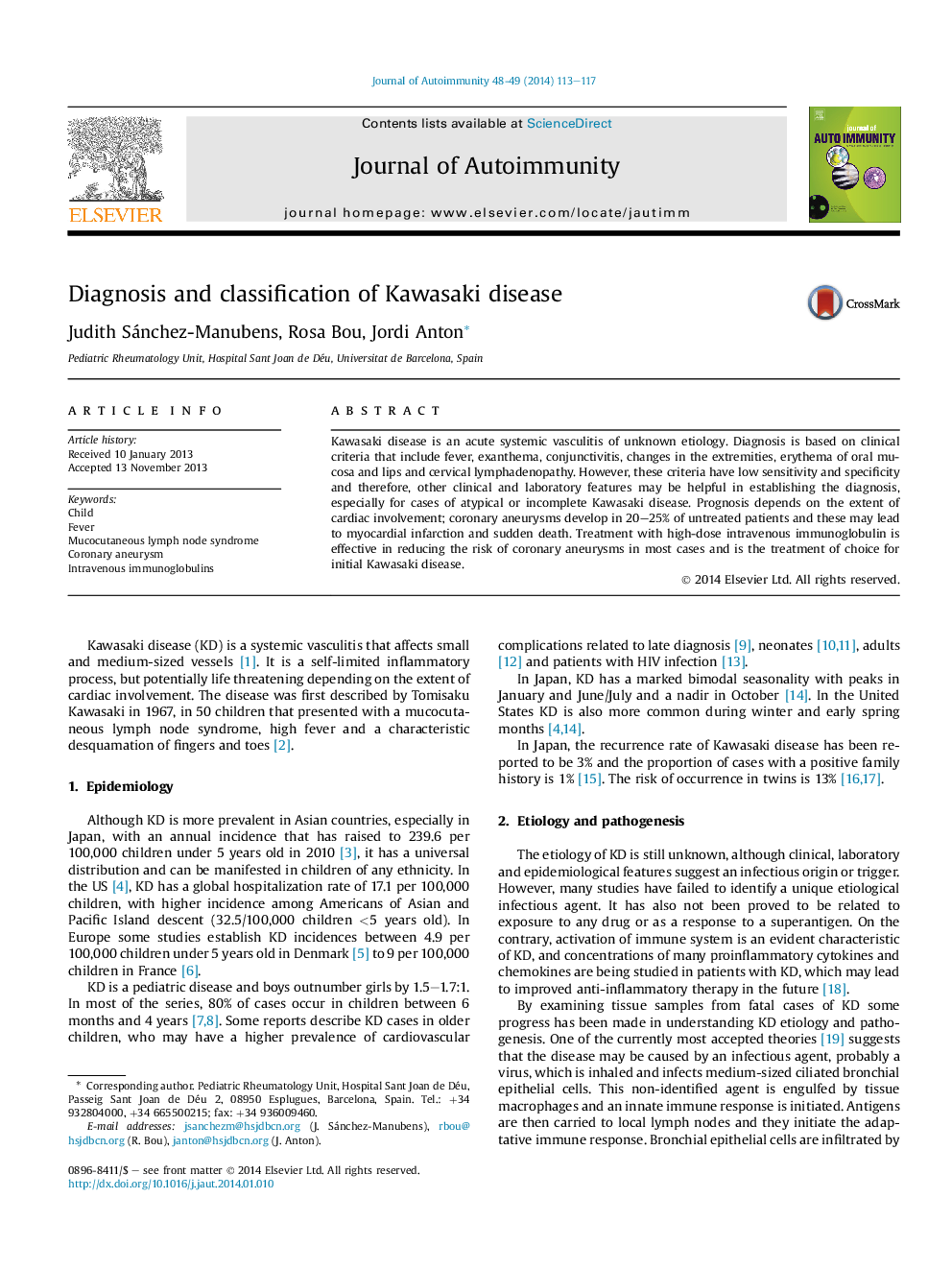| Article ID | Journal | Published Year | Pages | File Type |
|---|---|---|---|---|
| 3367848 | Journal of Autoimmunity | 2014 | 5 Pages |
•KD is a self-limited systemic vasculitis affecting small and medium-sized vessels.•Although more prevalent in Japan, it has a universal distribution.•Most patients are younger than 5 year-old.•Diagnostic is based in clinical criteria.•Early treatment with iv immunoglobulin reduces the risk of coronary aneurysm.
Kawasaki disease is an acute systemic vasculitis of unknown etiology. Diagnosis is based on clinical criteria that include fever, exanthema, conjunctivitis, changes in the extremities, erythema of oral mucosa and lips and cervical lymphadenopathy. However, these criteria have low sensitivity and specificity and therefore, other clinical and laboratory features may be helpful in establishing the diagnosis, especially for cases of atypical or incomplete Kawasaki disease. Prognosis depends on the extent of cardiac involvement; coronary aneurysms develop in 20–25% of untreated patients and these may lead to myocardial infarction and sudden death. Treatment with high-dose intravenous immunoglobulin is effective in reducing the risk of coronary aneurysms in most cases and is the treatment of choice for initial Kawasaki disease.
